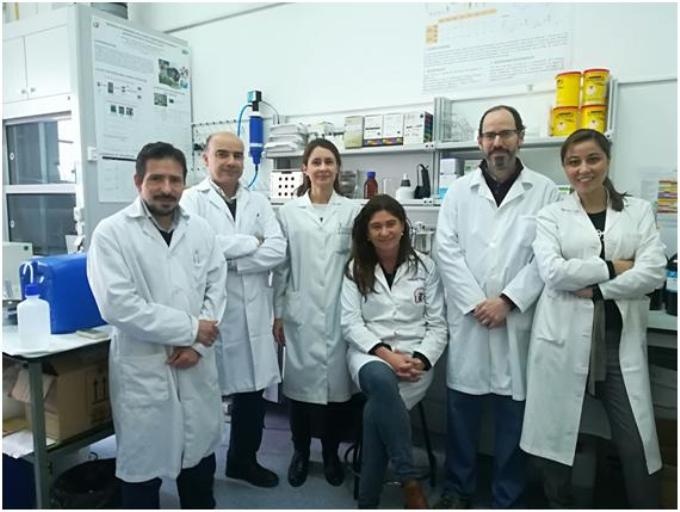Jun 6 2018
The presence of criteria and emerging pollutants in water is a contemporary theme that has caused the scientific community to look for new alternatives and solutions. University of Seville researchers have recently demonstrated the effectiveness of two new absorbent materials that can eliminate organic pollutants in solution within 24 hours.
 Esteban Alonso's research group. (Credit: University of Seville)
Esteban Alonso's research group. (Credit: University of Seville)
In detail, they have assessed two types of phyllosilicates: a highly-charged expandable synthetic mica (Na-Mica-4), and one attained from cation exchange with an organo-functionalized mica (C18-Mica-4). Phyllosilicates are a subcategory of silicates and include basic mineral in very varied environments.
The results reveal that the material C18-Mica-4 has the capacity to eliminate most of the pollutants that were assessed in urban wastewater, as well as potable water and surface water. Furthermore, the research provides data on the adsorption mechanism and confirms an important correlation between the physical-chemical properties of the particular criteria and emerging pollutants and the adsorption of the material.
All in all, 18 organic pollutants were examined, among which were personal care products, industrial pollutants, and the pharmacologically active ingredients such as central nervous system stimulants, antibiotics, anti-epileptics, anti-inflammatories, and lipid-lowering agents, among others.
Among the industrial pollutants, several compounds often used as cleaning products were tested, in addition to others used as water- and oil-repellents. Among the personal care products, two artificial preservatives were examined (propylparaben and methylparaben), both extensively used in pharmaceutical and cosmetic products. Finally, nine active pharmacological constituents were also analyzed (diclofenac, clofibric acid, salicylic acid, trimpethoprim, ibuprofen, propranolol, caffeine, carbamazepine, and gemfibrozil). Taken to accomplish various therapeutic effects, all these end up polluting the water, basically, via human excretion.
The research was conducted on untreated urban wastewater, surface water from rivers, treated urban wastewater, and potable water.
Studies like this, and others in the same line, are showing the potential of certain adsorbent materials for use in the industrial treatment of water affected by different types of pollution. Obtaining universal materials with a high elimination capacity and which can be used for a wide range of pollutants is the main goal in this area of investigation.
Professor Esteban Alonso, University of Seville
The subsequent steps in this research will be: the assessment of these materials in the elimination of other groups of water pollutants, their application on an industrial scale, and, separately, the enhancement of the functionality of the material itself.